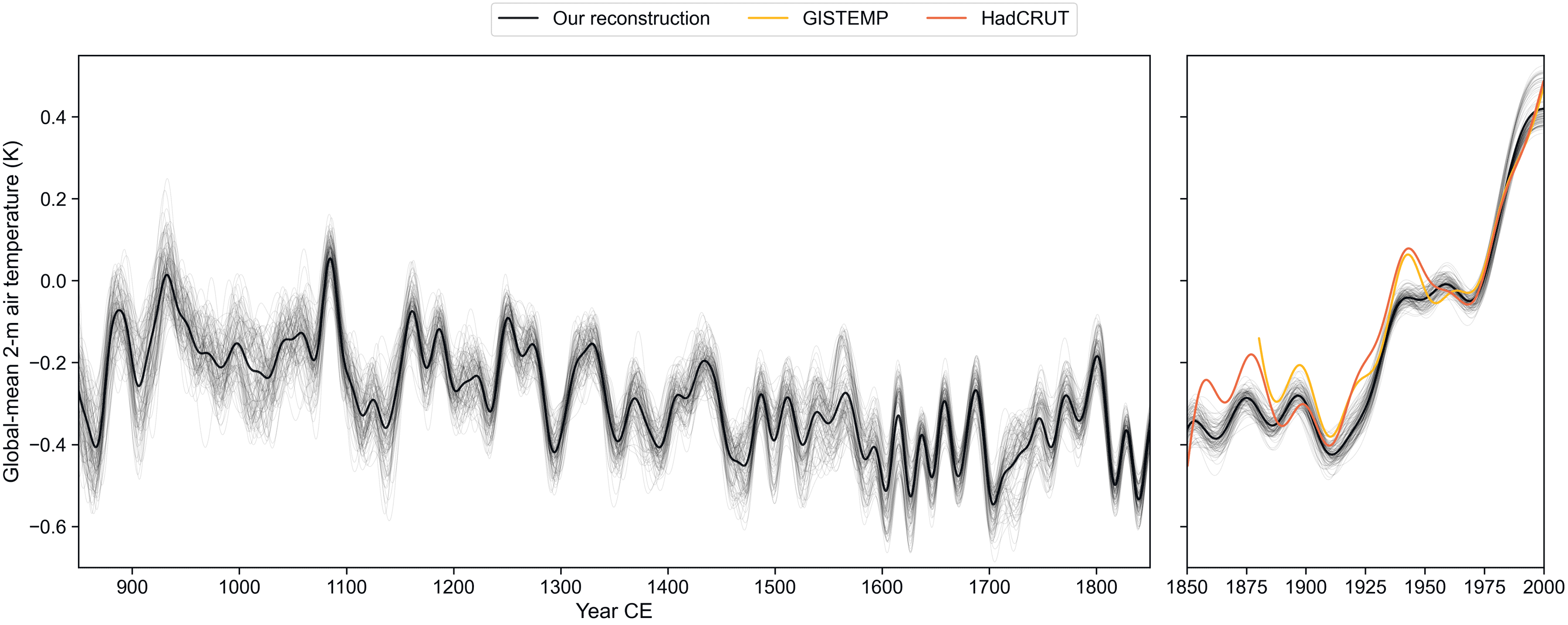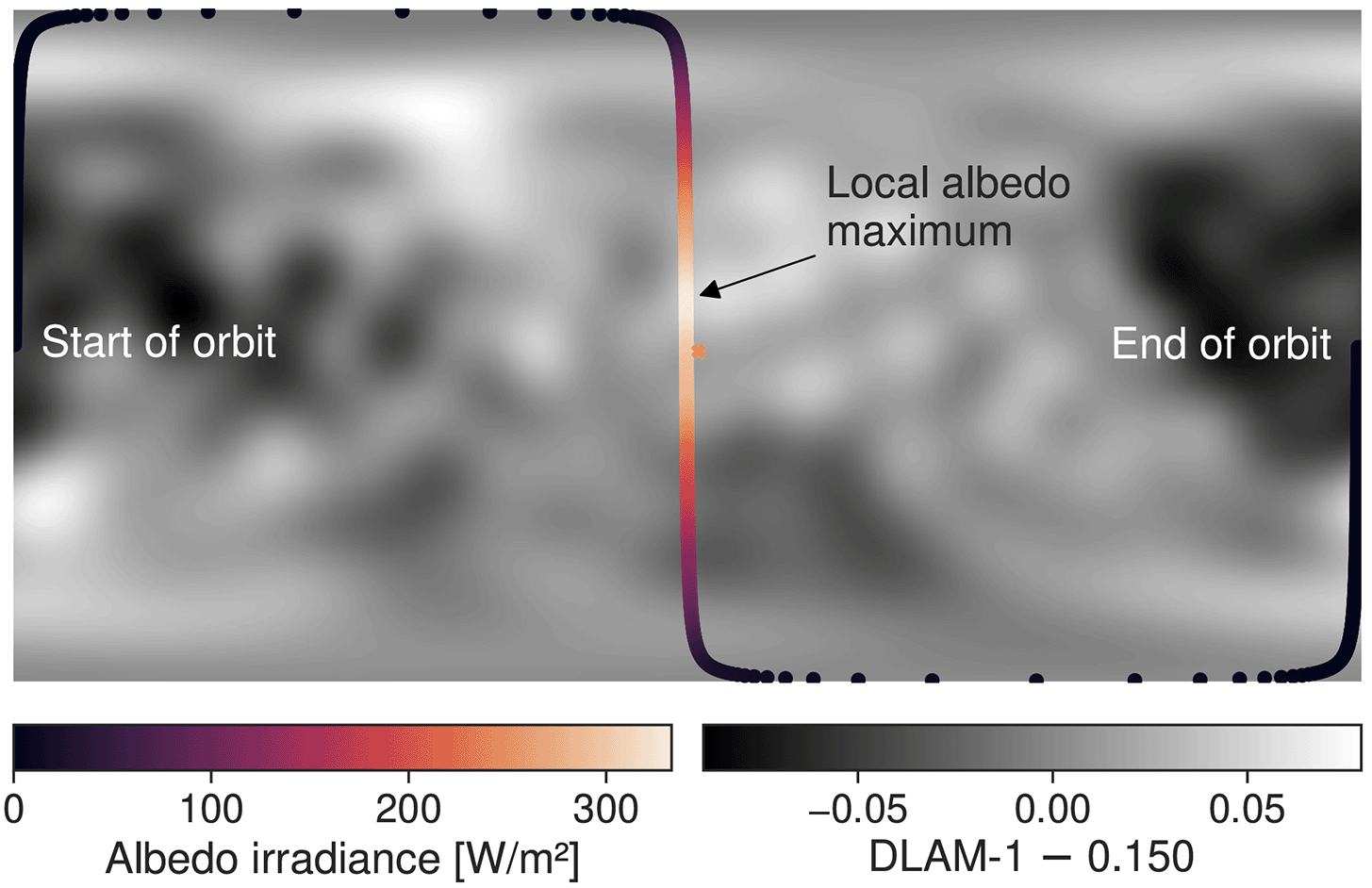Research
Reconstruction of Earth’s past energy imbalance

My current research focuses on reconstructing Earth’s energy imbalance and top-of-atmosphere radiation over the last millennium. We use climate model simulations with historical forcings and data assimilation of temperature-sensitive proxies. The proxies allow us to reconstruct past sea surface temperatures and sea ice cover, which are then prescribed as boundary conditions for ensemble simulations to diagnose forcings and feedbacks. We use this reconstruction to investigate mechanisms and patterns of multidecadal variability in Earth’s energy budget, which are poorly understood. We are also interested in forced trends of radiation at millennial timescales. This work is advised by Greg Hakim.
High-accuracy radiation pressure models

For this work, we investigated the effect of radiation pressure on the Lunar Reconnaissance Orbiter (LRO). We compared models of varying complexity to determine the benefits and computational cost of high-accuracy radiation pressure modeling. These models are necessary for precision orbit determination, which is a prerequisite for LRO’s geodetic mission objectives. We implemented models for both the spacecraft and radiation sources in the Tudat numerical astrodynamics framework. We found that accurate spacecraft models are necessary to account properly for changing orientation and geometry, but complex lunar models have little benefit over simpler ones. This work was advised by Dominic Dirkx.